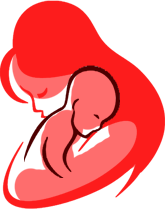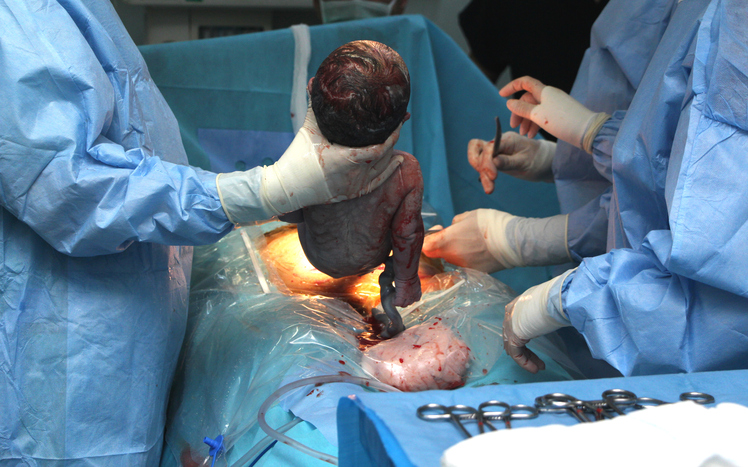

When would I need a cesarean section?
A cesarean delivery might be planned advance if a medical reason calls for it, or it might be unplanned and take place during your labor if certain problems arise.
You might need to have a planned cesarean delivery if any of the following conditions exist:
. Cephalopelvic disproportion (CPD)---is a term that means that the baby's head or body is too large to pass safely through the mother's pelvis, or the mother's pelvis is too small to deliver a normal-sized baby.
. Previous cesarean birth---Although it is possible to have a vaginal birth after a previous cesarean, it is not an option for all women. Factors that can affect whether a cesarean is needed include the type of uterine incision used in the previous cesarean and the risk of rupturing the uterus with a vaginal birth.
. Multiple pregnancy---Although twins can often be delivered vaginally, two or more babies might require a cesarean delivery.
. Placenta previa---In this condition, the placenta is attached too low in the uterine wall and blocks the baby's exit through the cervix.
. Transverse lie---The baby is in a horizontal, or sideways, position in the uterus. If your doctor determines that the baby cannot be turned through abdominal manipulation, you will need to have a cesarean delivery.
. Breech presentation---In a breech presentation, or breech birth, the baby is positioned to deliver feet or bottom first. If your doctor determines that the baby cannot be turned through abdominal manipulation, you will need to have a cesarean delivery.
An unplanned cesarean delivery might be needed if any of the following conditions arise during your labor:
. Failure of labor to progress---In this condition, the cervix begins to dilate and stops before the woman is fully dilated, or the baby stops moving down the birth canal.
. Cord compression---The umbilical cord is looped around the baby's neck or body, or caught between the baby's head and the mother's pelvis, compressing the cord.
. Prolapsed cord---The umbilical cord comes out of the cervix before the baby does.
. Abruptio placentae---In rare occurrence the placenta separates from the wall of the uterus before the baby is born.
During labor, the baby might begin to develop heart rate patterns that could present a problem. Your doctor might decide that the baby can no longer tolerate labor and that a cesarean delivery is necessary.
What can I expect before the cesarean?
If the cesarean delivery is not an emergency, the following procedures will take place.
. You will be asked if you consent to the procedure, and in some hospitals, you might be asked to sign a consent form.
. The anesthesiologist will discuss the type of anesthesia to be used.
. You will have a heart, pulse, and blood pressure monitor applied.
. Hair clipping will be done around the incision area.
. A catheter will be inserted to keep your bladder empty.
. Medicine will be put directly into your vein.